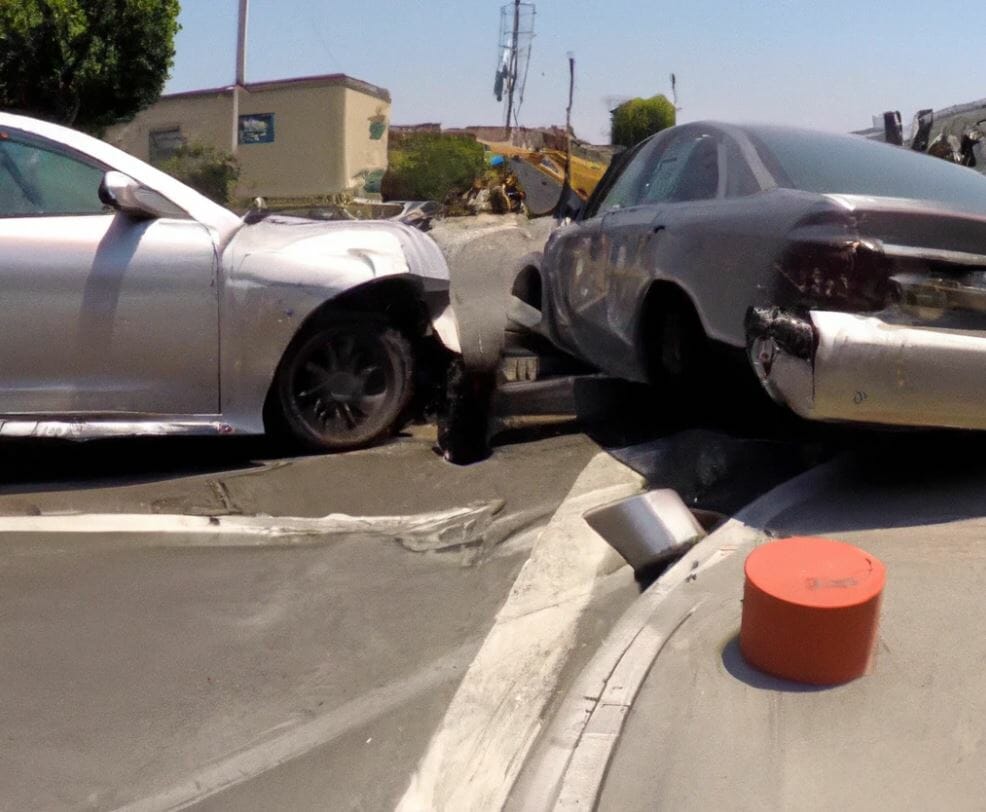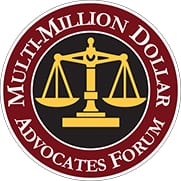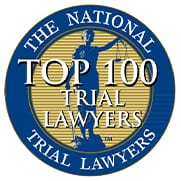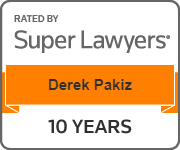
In life, some things may come easier than others. For example, if you spilled a gallon of paint on the carpet, it’s a safe assumption most would figure out who to blame. Now imagine that same scenario, but instead of paint it’s a car accident and instead of a carpet it’s the California highway.
Now, who is to blame? It may not seem as easy to assign fault in the case of an automobile accident, but it’s important to know what you need to do to prove fault in a California car accident.
Understanding the laws behind auto accidents can be quite challenging, so this blog post will focus on what you need to know about how lawyers can help you prove fault in a California car accident. We’ll be covering topics such as building your case, the statute of limitations, and common mistakes to avoid. So, buckle up and let’s get into the details of how you can prove fault in a California car accident.
Quick Breakdown of Key Point
To prove fault in a California car accident, you must provide evidence that shows the actions of another party were responsible for causing the collision. Evidence may include photographic evidence, eyewitness testimony, and police reports.
The Basics of Proving Fault in California
When it comes to proving fault in a California car accident, the basics are actually quite simple. Fault—or liability—is determined based on the elements of negligence and comparative fault. Negligence occurs when a person fails to exercise reasonable care to avoid causing an injury to another person or property. Comparative fault is used as an individuals percentage of fault during a car accident, with 0-100% being the range of liability assigned.
For example, if one driver runs a red light and causes a car accident while the other driver is found to be going over the speed limit resulting from tailgating the culprit, each party will most likely be assigned some percentage of fault upon investigation that is deemed appropriate.
More often than not, California follows a comparative negligence rule which means even if both parties are found partially at fault for the accident, it doesn’t necessarily mean that neither party will get any compensation for their damages or losses associated with the crash; however, the compensation awarded could be reduced depending on the percentage of liability assigned by the courts.
As you can see, understanding and proving fault in a California car accident can be complicated and must leave room for multiple factors to be taken into consideration. The importance of accurately assessing each claim to determine who was responsible cannot be understated. In order to make sure your case is properly argued it is important to understand exactly what evidence is necessary to establish liability. We will explore that topic further in the next section.
What is Necessary Evidence to Establish Fault?
When it comes to proving fault in a California car accident, there are certain pieces of evidence and information that must be provided. Responsible parties for the accident must be clearly identified, and the victim’s losses, damages, and injuries must be documented in order to obtain compensation from the liable party.
Evidence of fault or negligence could include video footage captured by nearby traffic cameras, statements given by witnesses, pictures taken at the accident scene, police reports, and physical testimony given by one or both drivers who were involved in the crash. Oftentimes medical records may also play an important role in determining who is responsible for the crash. As such, it can be helpful for victims to have existing medical records related to their injuries prior to being involved in the accident.
Additionally, it may also prove necessary to enlist an expert witness when attempting to establish fault in a California car accident. An expert witness is able to provide valuable insight as to whether either driver was acting recklessly and can even testify on behalf of one argues that his or her negligent behavior did not cause the collision in question.
These documents and testimonies can help determine whether a victim pursued the correct legal steps against another driver who was found responsible for the accident — ultimately playing a key role in providing necessary evidence during a civil trial. Establishing fault is particularly important when moving forward with legal proceedings so that each individual involved can receive appropriate compensation for any related damages or injuries.
Taking into consideration all of these factors, one can begin to paint a clearer picture regarding how essentially negligence played a role in causing an automobile accident when looking at example cases within the state of California. With this discussed, we will now move into understanding how negligence relates to auto accidents within California Law.
Negligence and Automobile Accidents in California
Negligence and Automobile Accidents in California are a very important legal concept to understand for anyone involved in an auto accident case. A person is considered negligent when their conduct falls below the standard of care expected of a reasonable person. If it can be shown that one or both parties were negligent, then they may be found legally responsible for any damages or injuries as a result of the accident. As such, proving negligence could be critical to establishing fault in a car accident in California.
Debating the issue, those who argue there is no negligence in automobile accidents in California often cite instances where excessive speed caused the car accident, or where two drivers collided while driving erratically at an intersection. Those on either side of the debate often cite cases like these as examples to support their position. They argue that if both drivers equally contributed to the accident by failing to exercise reasonable care then no party can be found negligent. Others however would counter that one driver should still have anticipated the other driver’s behavior and acted responsibly considering the circumstances.
Ultimately, each case will hinge on its own facts and what evidence can be presented to establish which party was negligent. It is important for those involved in car accident claims take into account issues such as laws and specific regulations that may have been broken when determining negligence. From cell phone use to failing to yield at an intersection, several elements must be considered before determining if a person can be held liable for negligence after a car crash in California.
Transitioning from this discussion surrounding negligence and automobile accidents in California, it’s important to understand what the legal standard is for determining fault due to negligence. The next section will focus on this topic, examining how fault is established in court and what factors are typically taken into consideration when deciding liability after a car crash.
Essential Information
Negligence and Automobile Accidents in California are a very important legal concept to understand. To prove negligence, one party must have fallen below the standard of care expected of a reasonable person. Issues such as cell phone use, speed, and failing to follow traffic laws must be considered when determining fault after an accident. The legal standard for establishing fault due to negligence will be discussed in the next section.
What is the Legal Standard for Negligence in Car Accidents?
The legal standard for negligence in car accidents is slightly different depending on which state you are in. In California, fault must be proven to determine who was negligent in a car accident and who is legally responsible for the damages. According the the California Supreme Court, “Actionable negligence consists of two elements: (1) duty; and (2) breach of that duty by failure to exercise reasonable care” (Roemer v. Retail Credit Co., 49 Cal. 2d 630 (1957)). This means that a driver is negligent if he or she does not exercise reasonable care in how they drive, resulting in an accident causing damages.
Arguments vary on what constitutes reasonable care when driving. Generally, it is accepted that a person must follow traffic laws, keep attention focused on the road, observe rules of the road, be aware of their surroundings including other drivers and potential hazards, give proper courtesy to other drivers, and pay attention to warning signs or construction which may require them to slow down or alter their driving route. Those opposed to this argument might say that following all these guidelines is not always possible due to unexpected occurrences or poor conditions of the road such as weather and construction. They argue that it would be unreasonable to assign full responsibility to a driver who faced such circumstances beyond their control.
Ultimately, it falls up to the court to decide what constitutes reasonable care based on the particular circumstances in each case using evidence presented by both parties. Witnesses can testify whether either party showed reasonable care when driving and physical evidence left at the scene can further help prove fault by showing speed or direction of impact from an accident. Whatever the facts presented, it’s up to the court to decide what standard of care was met when assessing negligence in car accidents. With these considerations in mind, you can now move onto gathering evidence that will assist you in proving fault for your accident.
Gathering Evidence to Prove Fault
Gathering evidence to prove fault in a California car accident is one of the most important steps for successful litigation. This can be tricky business since the burden of proof lies on the person bringing the lawsuit. In order for that person to prevail, he or she must show that the other party was negligent and that negligence caused the accident and their resulting damages.
In this situation, gathering evidence of fault is paramount. This includes things such as pictures around the scene of the accident and eye witness testimony. Additionally, electronic evidence such as photos and video footage could help a case if it exists. Police reports are also extremely helpful in proving fault in an auto collision. In some cases, an expert witness may be able to provide additional evidence. All information gathered should be kept in a safe place and presented to your attorney if necessary.
The amount and quality of evidence can often make or break a case involving a car crash. If there is little or no hard evidence of fault, it can be difficult to establish liability against the other driver in a court of law. Consequently, when faced with these types of situations, it is important to consult with legal counsel as soon as possible to review all available options for recovering damages from the accused party.
Although there may not always be sufficient evidentiary support for some accident claims, gathering as much evidence as possible can greatly increase the chances of success during litigation proceedings seeking compensation for injuries or property damage associated with an 18 wheeler collision in California. As those injured by others’ negligence work with their attorneys through this process, it is important to remember that with strong evidence useful facts can more effectively be brought forward to counter any offered defense theories. With that in mind, next we will evaluate what steps should be taken to identify who was involved in each particular car collision.
Identifying the Drivers Involved in the Accident
Having identified the fault of the involved parties in a California car accident, it can be difficult to determine precisely who was behind the wheel at the time of the accident. It is important identify who exactly was driving – any number of parties may have had access to the vehicle and could be found responsible for contributing to the accident in some way.
The best way to figure out who was at the wheel during an accident is typically through witness testimony. Witnesses may provide a description of the driver, along with other details that can help authorities figure out who was driving and what role they played in causing or preventing the accident. Additionally, pictures or video evidence taken right after the collision may be enough to reveal who was actually driving.
In cases where no witnesses were present or there are few pieces of evidence available, proof as to who was behind the wheel can become quite complicated. When there are no concrete pieces of evidence pointing to either party’s fault, then usually one party will need to accept responsibility for their actions in order for a claim for damages to be successful under California law.
Identifying who is responsible for a car accident is essential to establishing liability and setting forth actionable steps to take once fault has been determined. With that being said, it is important that both sides understand how enforcement works when pursuing civil action following an accident in order to ensure a successful resolution.
Enforcement of Fault in Civil Actions
Once the drivers involved in the California car accident have been identified, it will be essential to enforce the fault of each party. This is often done through civil court proceedings after a police report is filed. The goal of this process is to determine if one driver’s negligence was responsible for causing the accident and resulting damages. Depending on the facts of the case, proving fault in a California car accident may require an experienced attorney who can help produce evidence and collect testimony from witnesses or experts.
In most civil cases, a “preponderance of evidence” is required to prove fault. This means that a plaintiff must present enough evidence to show it was more likely than not that the other driver was negligent in their actions which resulted in the accident. Comparative negligence, or having both parties share responsibility for an accident, can also be considered in certain cases. For example, if both drivers were speeding simultaneously when they collided, they would each bear some degree of fault for the accident occurring.
Collecting relevant evidence that proves negligence is another key part of establishing fault in a California car accident. This can include photos from the scene of the accident as well as dash cam recordings or any other videos that may be available that captured information about how and why the collision occurred. Evidence often reveals important details such as vehicles swerving out of their lane or running red lights which demonstrate negligence on one driver’s part.
It is also important to consider what kind of state laws may apply to a particular situation. Traffic regulations must always be followed and any violations may lead to one driver being found responsible for the crash. Therefore, it is important to ensure compliance with all applicable laws to protect your legal rights if you are involved in an automobile collision in California.
The process of determining liability and fault in a California car accident requires considerable time and effort on behalf of those affected by any injuries resulting from such collisions. Fortunately, experienced attorneys can use their knowledge and resources to help victims prove negligent behavior existed on behalf of another party so that liability can be established and compensation obtained for damages suffered.
Experienced Attorneys Can Help Prove Fault
Experienced attorneys can be invaluable when it comes to proving fault in a California car accident. They understand the complex legal system, have had experience handling similar cases, and are familiar with the applicable laws and regulations. Attorneys are also skilled at gathering evidence and presenting it in a way that is most persuasive to the court. On top of that, they can provide much-needed guidance and support during a difficult time.
Some may argue that when it comes to asserting fault after a car accident, an attorney isn’t necessarily needed and could end up causing more problems than solutions. However, there are many examples of individuals who successfully pursued fault without an attorney only to find out later that they had made costly errors throughout the process. Dealing with insurance companies and courts on your own, without knowledge of the law, can result in costly missteps or mistakes. An experienced attorney can help avoid such pitfalls while still keeping costs manageable.
The evidence clearly shows that while some individuals are capable of proving fault on their own, experienced attorneys can provide valuable insight into the process which results in a successful claim and better protection of their interests. Furthermore, the cost savings that an attorney brings—by avoiding costly errors or missteps—can far outweigh the initial cost of acquiring legal services. Ultimately, seeking assistance from seasoned legal professionals is often wise for those looking to establish fault after a California car accident.
FAQ
What evidence do I need to prove fault in a California car accident?
In order to prove fault in a California car accident, you will need evidence which shows that one of the drivers failed to use reasonable care behind the wheel. Examples of such evidence may include police reports, witness statements, photographs or videos taken at the scene of the accident, any citations issued by law enforcement, or medical bills incurred as a result of an injury suffered in the accident. You will also want to review the applicable laws to identify what duty of care is expected from drivers in similar circumstances. Finally, if an expert witness is required to determine fault in your particular case, you can look into consulting with a traffic engineer or other expert familiar with car accident cases.
How do California court cases determine fault after a car accident?
California court cases determine fault after a car accident according to the legal concept of negligence. Negligence is when one party fails to use reasonable care to avoid injuring another party. In California, the law requires drivers to use “due care” which means they must drive safely and take reasonable measures to prevent an accident or injury.
Because California is a “fault state”, drivers who are responsible for causing an accident may be held liable for any damages that result from that accident. To establish fault in a California car accident lawsuit, the injured person (the plaintiff) must prove that the other driver (the defendant) acted negligently. This can be done by showing that the defendant breached their duty of care by failing to drive cautiously under the circumstances.
To be successful in proving fault in a California car accident, an attorney may look at factors such as weather conditions, the speed at which each vehicle was travelling, any skid marks left on the roadway and the point of impact between vehicles. Witnesses for both parties may also be called upon to testify as to what they observed before, during and after the collision.
Once negligence has been established, it must then be proven that this negligent conduct was the cause of the plaintiff’s losses and injuries. The degree of fault assigned to each driver will depend on how carefully they were driving prior to impact, how clearly they followed all applicable traffic laws and whether or not their actions were reasonably foreseeable to cause harm.
What steps should I take to gather evidence to prove my case in a car accident in California?
If you find yourself in a car accident in California and need to prove fault, it is important to take the right steps in order to gather evidence to support your case. Here are some of the most important steps you should take:
1. Document the Scene – Take pictures from all angles of the scene and be sure to get the license plate number of each vehicle involved. If possible, get contact information for any witnesses who may have seen what happened.
2. Exchange Information – Collect contact and insurance details from the other driver as soon as possible. It is also important to document any paperwork exchanged with police officers.
3. Seek Medical Treatment – Even if you do not require immediate medical care, get checked out by a medical professional and documented in case symptoms come up later on.
4. Report the Accident – Call the police to report the accident and get a copy of their official report once it’s completed. This provides an independent account of the incident that can be used in court.
5. Speak to an Attorney – Contact an experienced attorney who can advise you on what other documents you need to prepare and who can help ensure your rights are protected throughout the process.











The number of motorists who neglect traffic rules causes frequent accidents